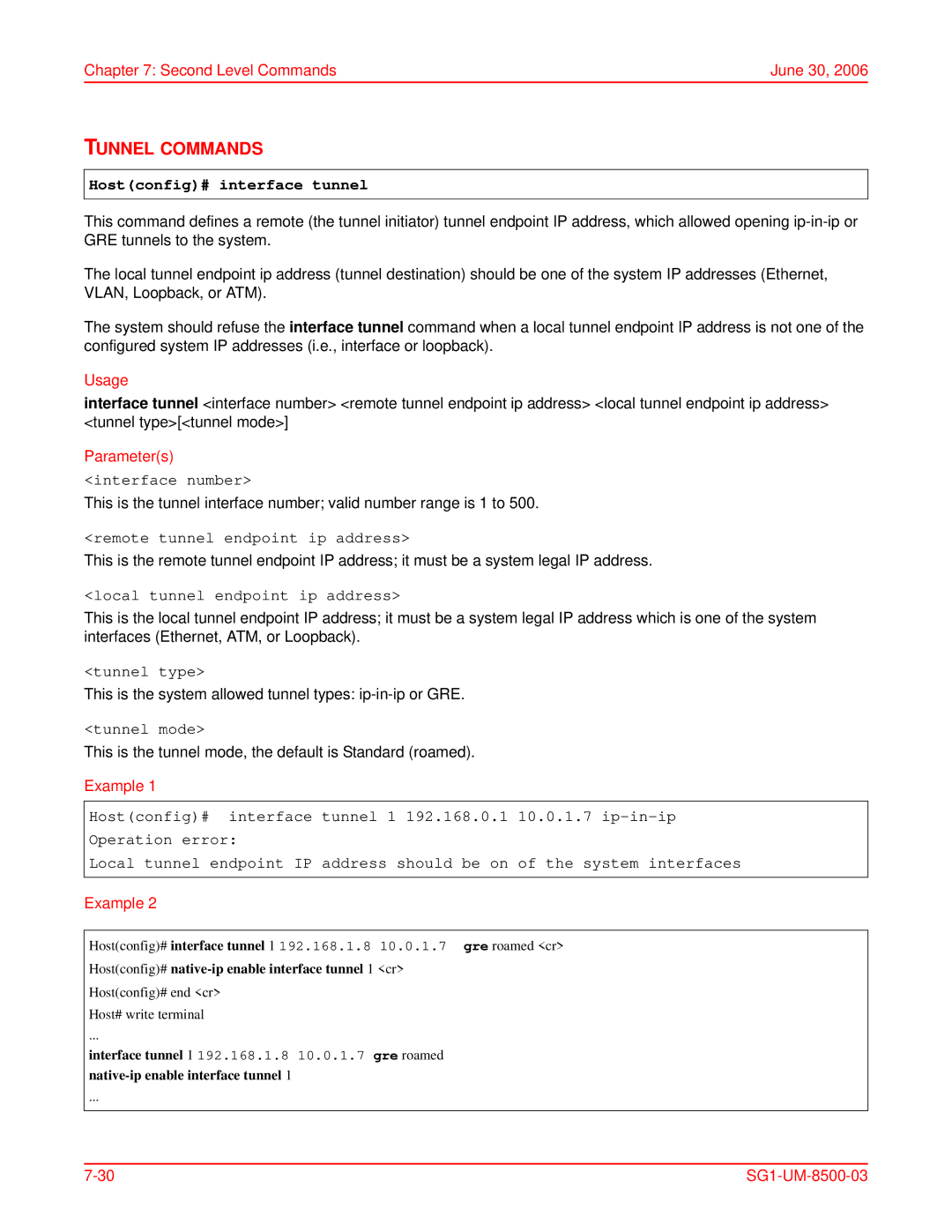
Chapter 7: Second Level Commands | June 30, 2006 |
TUNNEL COMMANDS
Host(config)# interface tunnel
This command defines a remote (the tunnel initiator) tunnel endpoint IP address, which allowed opening
The local tunnel endpoint ip address (tunnel destination) should be one of the system IP addresses (Ethernet, VLAN, Loopback, or ATM).
The system should refuse the interface tunnel command when a local tunnel endpoint IP address is not one of the configured system IP addresses (i.e., interface or loopback).
Usage
interface tunnel <interface number> <remote tunnel endpoint ip address> <local tunnel endpoint ip address> <tunnel type>[<tunnel mode>]
Parameter(s)
<interface number>
This is the tunnel interface number; valid number range is 1 to 500.
<remote tunnel endpoint ip address>
This is the remote tunnel endpoint IP address; it must be a system legal IP address.
<local tunnel endpoint ip address>
This is the local tunnel endpoint IP address; it must be a system legal IP address which is one of the system interfaces (Ethernet, ATM, or Loopback).
<tunnel type>
This is the system allowed tunnel types:
<tunnel mode>
This is the tunnel mode, the default is Standard (roamed).
Example 1
Host(config)# interface tunnel 1 192.168.0.1 10.0.1.7
Local tunnel endpoint IP address should be on of the system interfaces
Example 2
Host(config)# interface tunnel 1 192.168.1.8 10.0.1.7 gre roamed <cr>
Host(config)#
Host(config)# end <cr> Host# write terminal
...
interface tunnel 1 192.168.1.8 10.0.1.7 gre roamed
...
|
